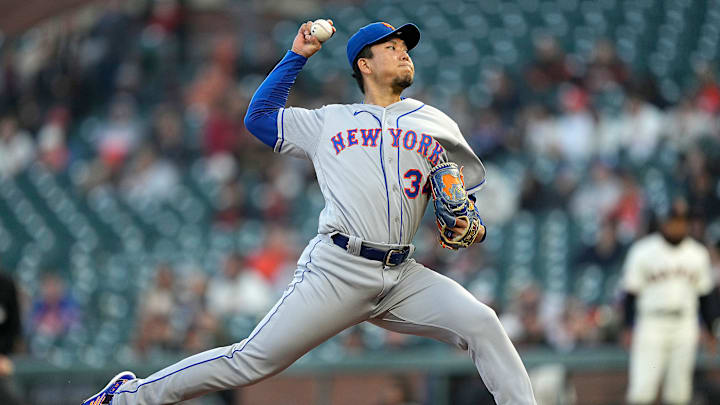The only star in the New York Mets rotation, right now, is Kodai Senga. The Japanese have the best record among Mets starting pitchers at 3-0 before his outing against the Washington Nationals.
Kodai Senga has remained the leader among Mets starting pitchers in strikeouts per nine innings. In four outings, Senga's arsenal has shed positive and negative aspects but three of them are the most essential.
The good: Senga's Ghost Forkball ranks among the best pitchers in all of the MLB
The expectation around the arrival of Kodai Senga to MLB was due, in large part to his star pitch, the forkball. This so-called Ghost forkball is a pitch similar to the splitter with the difference of having less speed and more lateral break.
This pitch has been completely dominant, holding hitters to a batting average and slugging percentage of just .120. The forkball has limited opponents to such a level that not a single barrel has been generated from this pitch. Hence, the hard-hit contact allowed is 0.0%. Something impressive.
Senga has generated an impressive chase% of 34.4 and an in-zone swing and miss% of 31.3. This means that connecting the Ghost Forkball has been practically impossible. Kodai Senga must continue using this pitch, which he uses 22.3% of the time.
The bad: his forkball aside, Kodai Senga has been allowing a high contact hard hit
Kodai Senga has been effective so far but he should start adjusting the rest of the non-forkball pitches. To date, his 4-seam fastball, sweeper, and cutter have an xSLG above .500, which is excessively high.
His hard-hit contact% is above 40% pushing his xERA over 5.50. Senga must find a way to limit this hard contact, using better location on his pitches and using his sweeper less.
His fastball has not allowed many hits and he has managed to retire batters thanks to his high speed averaging 96.0 mph. However, the Japanese should avoid continuing to use his sweeper or practice to improve it.
This pitch has allowed a disproportionate .1300 SLG and a .400 batting average. Senga's sweeper hasn't managed to retire a single batter via strikeout with two strikes. Additionally, despite being the pitch with the highest spin rate, it generated a whiff% below 10.0%, which is quite bad.
As long as Senga continues to allow this hard-hit contact, its potential is limited. As Senga can perfect his pitches, he will be able to improve in this relevant category.
The ugly: Kodai Senga's control has become his worst enemy
Kodai Senga's control was the most worrying factor about his adaptation to MLB. The change of mound, ball, and field would become a process that would require major adjustments in his pitches.
The Japanese seem not to fully control his pitches, especially the fastball and the sweeper, which have a BB% greater than 16.0%. This has caused Kodai Senga's percentage of walks to be located at 14.9%. This places Senga as the 44th-worst pitcher in the league in this category.
We must assume that this is due to his grip on these pitches due to his adaptation to the new ball. But as the walks keep coming, it will make it harder for Senga to be effective on the field and limit the runs allowed.
